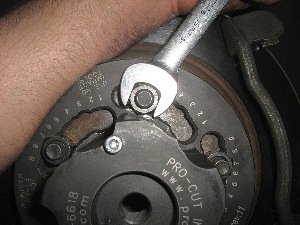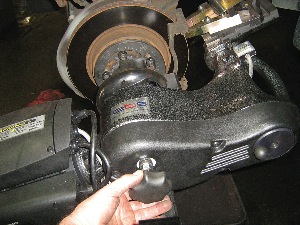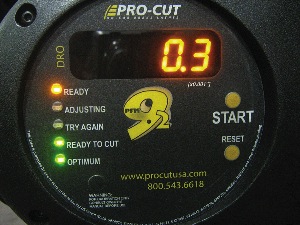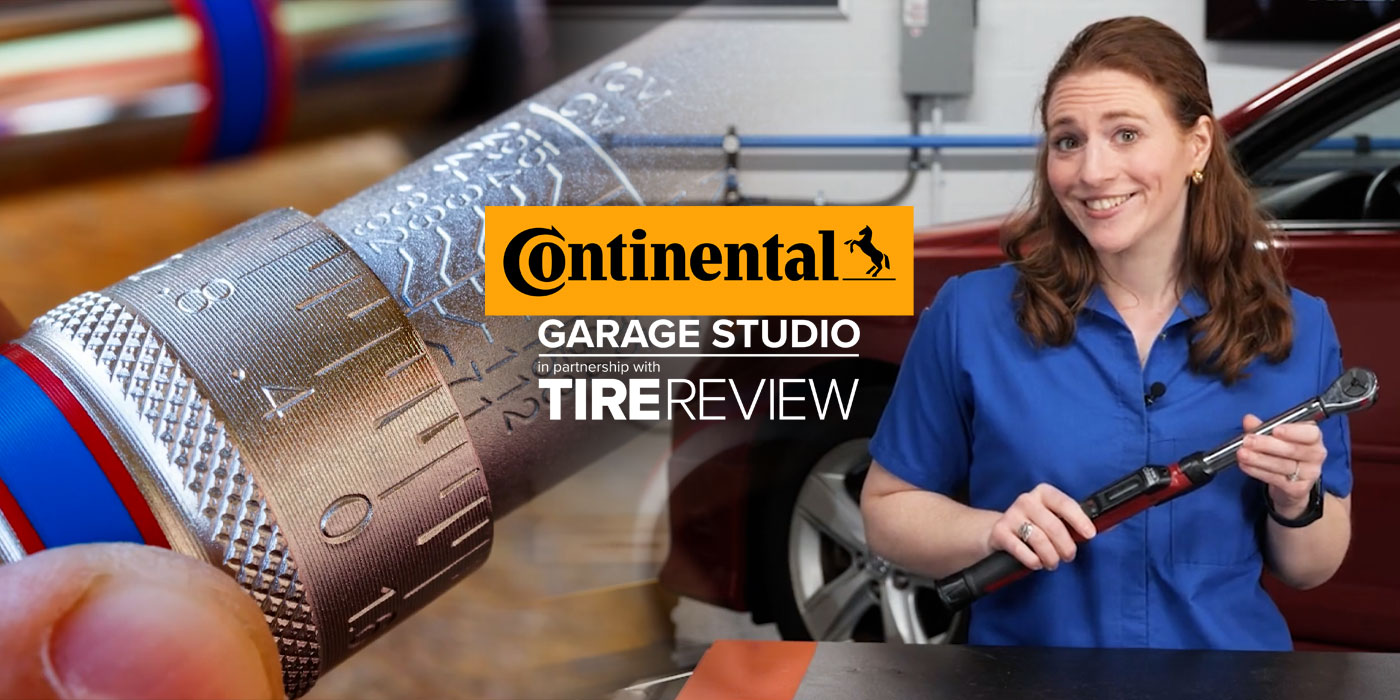One of my favorite pieces of shop equipment is the on-the-car brake lathe. Not only does it resurface the rotors to the center line of the wheel bearings, it also speeds the job up in some cases – a win/win situation.

I remember the earlier models of on-car lathes that were a complete pain to set up; not so with today’s equipment, which is painless if you know what you’re doing. There are several different hub-mounted models on the market, but the basics are generally the same.
I start by removing the little push-on retainer that is used to hold the rotor in place at the factory before the wheels are bolted on. This serves a couple purposes; one is so there is no chance the retainer can interfere with the quality of the machine mounting. The other reason is just to give the next technician a quick visual reference that the rotors have been resurfaced at least once.
The next step is to mount up the lathe’s hub adapter. Remember, at no time should there be an impact wrench used here. Many times, these adapters even have such a warning found on them. They’ll also have torque specifications listed to warn against over torquing.
I’ve worked in shops where someone thought they could use an impact wrench on these as long as they were careful. Then one day the adapters just crumbled from fine cracks in it that were caused by over torquing. These adapters are expensive – I’ve seen them run between $300 and $500 each. The good news, however, is as long as they aren’t abused, they almost never wear out.
All of the nuts should be used around the adapter and tightened evenly by hand.

On the hub of some models is an alignment pin that must be observed when mounting the machine to the adapter.
Once the machine is pushed up to the adapter with the alignment pin properly engaged, there is a hand-operated screw in the center of the machine’s drive shaft to tighten. This is a hand knob, which means it only needs to be hand tightened. Please, leave the giant pair of tongue and groove pliers in your toolbox for this step. Some lathes have a nut and draw bar, in which case use only the provided wrench.
After this step, many machines will adjust themselves. Just plug it in, push the reset button, and then the start button. The digital display starts by showing the runout of the mounted machine, then adjusts down. Some models have a “plate” that is between the adapter and lathe that the operator adjusts. After the adjustment for runout is performed, the lathe will give you a green light to cut.
Some new lathes have “anti chatter technology” that oscillates the machining speed of the lathe and eliminates the buildup of vibration (chatter) that can occur when machining at a fixed speed.
Just like with a bench lathe, the cutting bits must be set for cutting depth and run to the friction surface of the rotor closest to the hub.
Front rotors and rear rotors usually machine in the same way with on-car lathes, but when cutting the rear rotors on limited slip differentials the transmission must be placed in neutral. Some full-time all-wheel drive vehicles may require the rear drive shaft to be lowered on one end.
After machining is complete, open air mounted wheel speed sensors and tone rings should be cleaned. This is critical after machining a rotor right over top of the sensor, since it will be showered in metal dust.
It certainly is possible to machine hub type rotors with serviceable bearings in this manner, as well. Let’s be honest – many shops out there have and do machine these rotors without ever touching the bearings. Just because we can do this, of course, doesn’t mean we should. A brake service is traditionally the only time these bearings get inspected and serviced, so the proper thing to do would be to perform wheel bearing service on these vehicles, then machine the rotors with the on-car lathe.
Some shops may do this automatically with a brake service, and some may make it a separate, chargeable service. Either way is correct, as long as the opportunity to service these bearings is not just swept under the rug and ignored.

Keep the cutting bits sharp, keep the machine clean and in proper repair, and your on-the-car lathe should make you happy and productive.
Quality Control
Using an on-the-car brake lathe is easy, but it still requires that you perform your own checks to verify if the rotor can be machined in the first place. The time taken during this step can save you even more time down the road. It can also prevent comebacks and bad estimates that can stall a brake job.
1. Hold the rotor in place with the lug nuts. Conical washers may be required on some vehicles.
2. Measure the rotor’s thickness and determine if it can be machined. If no out-of-the-ordinary problems are present, you can now proceed to machining the rotor.
3. If the vehicle has a pulsation problem, or other unusual symptoms, it may be necessary to perform a pre-machining diagnostic with a dial indicator to determine if machining the rotor will resolve the problem. This stage can save time by isolating the problem.
4. At this point, mark the runout point on the hub of the rotor and the closest lug bolt (indexing). Reinstall the rotor with the high spot 180 degrees from the previous position of the hub and measure the runout. This check can give you an idea if the runout is in the rotor or in the hub. This can save the rotor by reducing the amount of material needed to be removed.
5. Clean the hub’s mounting face.
6. Measure the runout at the hub’s face with the dial indicator. The amount of runout at the hub’s flange is a constant and cannot be machined out; only replacement can resolve the problem.
7. If the vehicle has a pulsation problem, you might want to confirm that there is no runout after the rotor is machined. Always measure at three points. This is a check that can help to spot worn wheelbearings.
8. Reinstall the wheel with either a torque stick or torque wrench.













